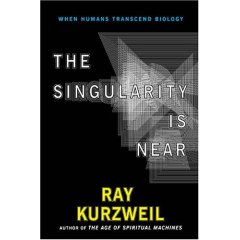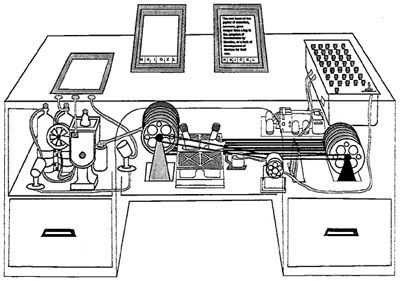Philip M. Parker, a professor at Insead, the international business school based in Fontainebleau, France, has written 85,000 books and counting. He’s like a machine. In fact, he has a machine that writes them for him. The Guardian has more.
Most, if not all, of these books can be found on Amazon. Sifting through them felt like a bad riff on “The Library of Babel.” I felt like I’d stumbled upon a weird new form of bibliographic spam -? thousands of machine-generated titles gumming up the works, jamming the signal, eroding the utility of the library. Matt Kirschenbaum, who forwarded the link, said it recalled the book machines in Italo Calvino’s great meta-novel, If On A Winter’s Night a Traveler:
He has you taken into the machine room. “Allow me to introduce our programmer, Sheila.”
Before you, in a white smock buttoned up to the neck, you see Corinna-Gertrude-Alfonsina, who is tending a battery of smooth metallic appliances, like dishwashers. “These are the memory units that have stored the whole text of Around an empty grave. The terminal is a printing apparatus that, as you see, can reproduce the novel word for word from the beginning to the end,” the officer says. A long sheet unrolls from a kind of typewriter which, with machine-gun speed, is covering it with cold capital letters.
Prices are often absurdly inflated, up to the many hundreds of dollars. While, on Amazon, you can’t peek inside any of the books, the product descriptions read like prose recycled from free government business or health leaflets (stuff that usually feels like it was written by a machine anyway). There seem to be a few dozen tropes which are repeated with slight variations ad nauseum. A few sample titles:
-? The 2007 Report on Wood Toilet Seats: World Market Segmentation by City (330pp., $795)
-? The 2007-2012 Outlook for Lemon-Flavored Bottled Water in Japan (140pp., $495)
-? Avocados: A Medical Dictionary, Bibliography, and Annotated Research Guide (108pp., $28.95)
-? Brain Injuries – A Medical Dictionary, Bibliography, and Annotated Research Guide to Internet References (244pp., $28.95)
In fact, there’s a whole trope of titles that are guides to “internet references,” which makes me wonder if Parker’s machine is just scraping the entire Web for content.
Odd.


 Kurzweil’s
Kurzweil’s  The software (called DEVONthink) not only helps organize and briskly sift through readings, clippings, quotes, and one’s own past writings, but assists in the mysterious mental processes that are at the heart of writing – associative trains, useful non sequiturs, serendipitous stumbles. In effect, we now have a tool resembling the
The software (called DEVONthink) not only helps organize and briskly sift through readings, clippings, quotes, and one’s own past writings, but assists in the mysterious mental processes that are at the heart of writing – associative trains, useful non sequiturs, serendipitous stumbles. In effect, we now have a tool resembling the 
 Says Johnson on his latest
Says Johnson on his latest  And what about other forms of information – images, video, sound etc.? These media will come to play a larger role in the writing process, given the ease of processing them in a PC/web context. Images and music trump language in their associative power (a controversial assertion, please debate it!), and present us with layers of meaning that are harder to dissect, certainly by machine. It is an inchoate hound to be sure.
And what about other forms of information – images, video, sound etc.? These media will come to play a larger role in the writing process, given the ease of processing them in a PC/web context. Images and music trump language in their associative power (a controversial assertion, please debate it!), and present us with layers of meaning that are harder to dissect, certainly by machine. It is an inchoate hound to be sure.